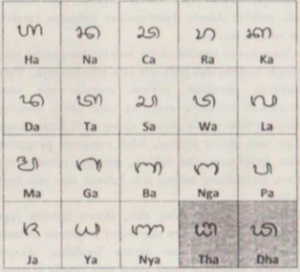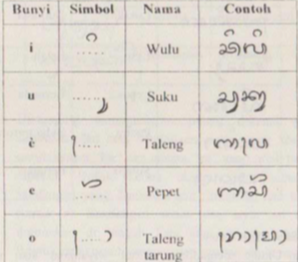Vowels
| Working orthography | IPA | Example words |
| a | [a] | anak ‘son/daughter’ |
| é | [e] | sepéde ‘bicycle’, keréréq ‘laugh’ |
| è | [ɛ] | èndah ‘also’, ‘dirty, disgusting’ |
| e | [ə] | mate ‘eye’, tebel ‘ thick’ |
| i | [i] | inaq ‘mother’, sampi ‘cow’ |
| o | [o] | aoq ‘yes’ |
| ò | [ɔ] | manòk ‘chicken’ |
| u | [u] | tunuq ‘roast’ |
Minimal pairs:
kedok ‘dig’ vs. kedók ‘deaf’
mate ‘ eye’ vs. maté ‘die’
anget ‘warm’ vs. angèt ‘chew’
Consonants
| Working Orthography | IPA | Example Words |
| p | [p] | pade ‘same’, idap ‘feel’ |
| b | [b] | butak ‘bald’ |
| m | [m] | mangan ‘eat’, inem ‘drink’ |
| t | [t] | tindoq ‘sleep’ |
| d | [d] | dedare ‘girl’ |
| n | [n] | nasiq ‘rice’ |
| s | [s] | sili ‘angry’ |
| c | [t͡ʃ] | celane ‘pants’ |
| j | [d͡ʒ] | jeloq ‘to dry’ |
| ny | [ɲ] | nyot ‘suck’ |
| k | [k] | kodeq ‘small’ |
| g | [g] | gule ‘sugar’ |
| ng | [ŋ] | ngantoq ‘sleepy’ |
| q | [ʔ] | amaq ‘father’ |
| h | [h] | omèh ‘grambling’ |
There are no voiced oral stops (like g, d, or b) at the end of a word.
Traditional Orthography
The traditional Sasak orthography is a syllabic writing system with vowel diacritics. It is no longer taught because most people use the Indonesian writing system.
Consonants:

Vowels:


